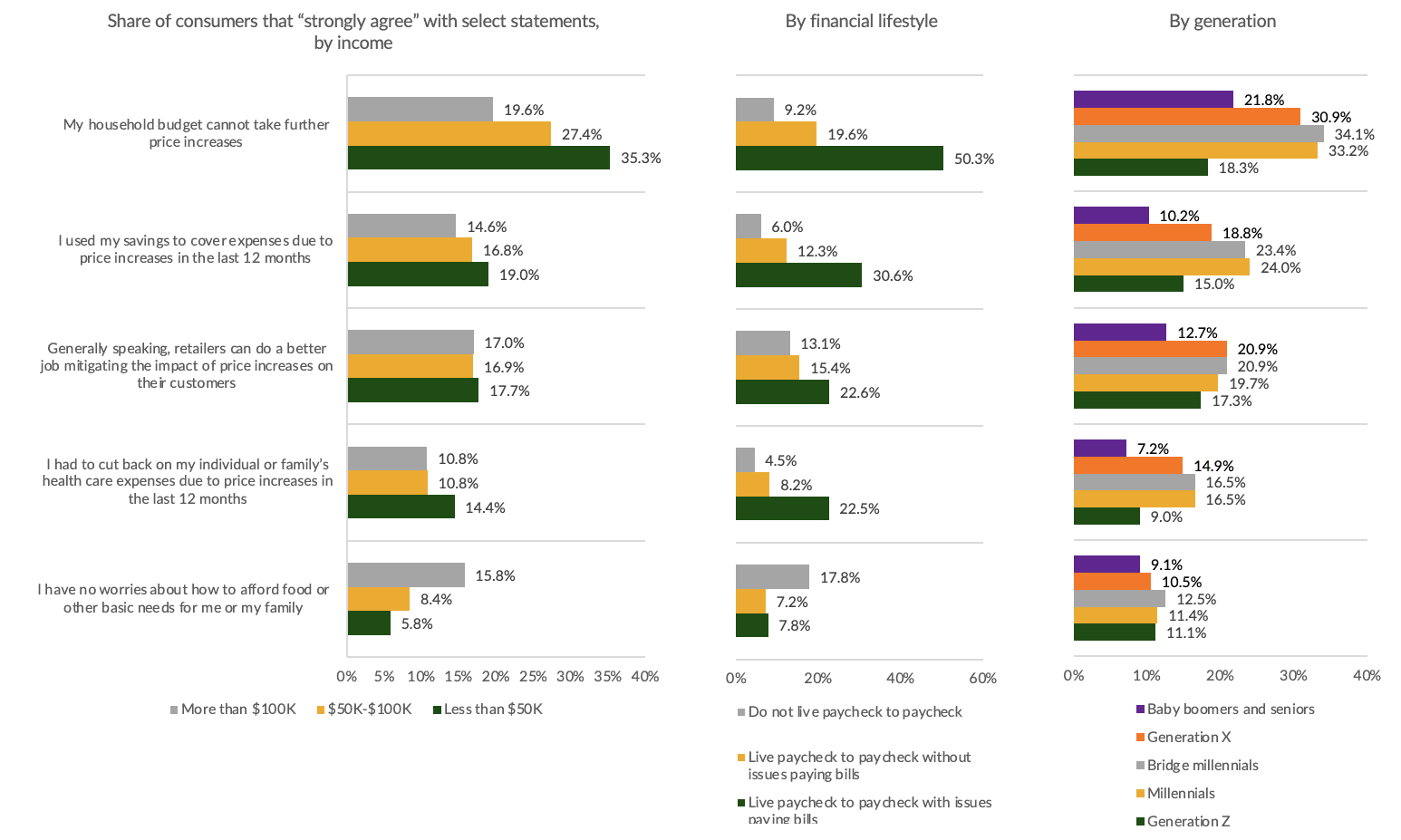Inflation May Give Younger Consumers Pause Before Reaching for Their Cards

Inflation hits everyone, yes — and how they view their financial straits governs how they’ll spend in the near (and longer) term.
And while all signs point to a propensity to open the wallets — the digital ones and the physical ones — from commentary from the likes of American Express, one wonders how tenuous younger consumers’ spending activity might be.
As Karen Webster noted in Monday commentary in this space, inflation robs all consumers of their purchasing power, unless their wages have kept pace.
Their wages have not kept pace.
And at a high level, more than half (53%) of consumers say their financial condition is worse in 2022 than it was in 2021. Nearly a third believe it will deteriorate over the next 12 months.
That’s according to a national online study of 3,783 consumers conducted by PYMNTS in July 2022 (July 1-7, July 17-20).
It’s understandable, too, that 80% of consumers living paycheck to paycheck have seen their financial situations worsen, and half expect their financial standings to erode further over time. After all, when inflation runs at 8% to 9%, as it has been, the P2P consumer finds it harder than ever to stretch each dollar to mee the most basic financial needs.
PYMNTS data shows that more than half (53%) of consumers say that interest rates on their credit card balances have increased, which in turn signals that credit card spending may see a pullback, especially if consumers continue to chip away at their savings that had been built up over the pandemic.
We can see from the charts below — in data gleaned by PYMNTS earlier this month — that P2P consumers are less sanguine about inflation than other financial “lifestyle” cohorts, and 20% do not see inflation ever returning to pre-2021 levels. Roughly a third think the “return” will take two years or more.

Drill down a bit and we see that more than half of millennials and nearly half of Gen Z consumers have estimated that their financial situations have worsened over the past several months.

And with some commentary about their ability to mitigate the impact of inflation on day-to-day living and spending, these younger generations — a significant percentage of millennials and Gen Z — say their household budgets “cannot take further price increases” and at the same time they are using household savings to cover those price increases.
 For now, at least, there’s enough financial firepower on hand to navigate these challenges. Estimates from the Federal Reserve show that current card balances are 11% below pre-pandemic levels and there is as much as $3.3 trillion in untapped available credit held by consumers.
For now, at least, there’s enough financial firepower on hand to navigate these challenges. Estimates from the Federal Reserve show that current card balances are 11% below pre-pandemic levels and there is as much as $3.3 trillion in untapped available credit held by consumers.
But as to how long it all lasts — well, that’s the question.
As American Express’ results show, billed business — the dollar amount of all charges on its cards — was up 30%. And the younger consumers are among those giving a tailwind to that activity, boosting their spend by 48% year on year.
CEO Steve Squeri said millennial and Generation Z consumers “are a large part of our existing customer base and our fastest growing age cohort making up 60% of all new consumer card members we’re acquiring and around 75% of new us consumer platinum and goal card members.”
Inflation is the wild card, of course — and if it persists, may make consumers think twice about reaching for the (credit) card.
